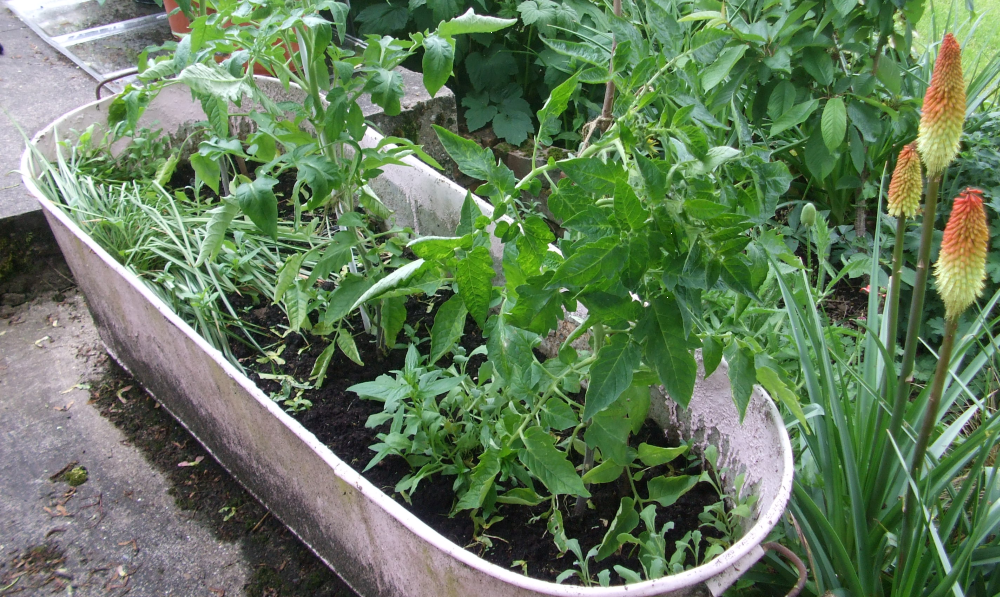
June 9, 2014, by Helen Whitehead
Grow your own veg successfully!
One of the ways in which many of us try to live sustainably is by growing our own food. Personally, I can’t seem to grow anything worth eating, but Sarah Speight, course leader for the Sustainability, Society and You MOOC which runs again on FutureLearn from next Monday 16 June, has much more success!
During this spring’s cold snap Sarah reported: “I have tables full of veg plants in my box room, my bathroom, my study and my other spare room. There is a sea of tomatoes, cucumbers, french beans, peas, broad beans, a couple of globe artichokes, okra (new experiment for this year). I’m a bit obsessive – I think I enjoy the growing more than the eating. I’m hoping to move a lot out into the greenhouse next weekend – we have some cold mornings coming up so I’m keeping them in the warm a bit longer. My husband and son are now used to sharing their space with vegetables! I always start growing too soon.”
Sarah has provided some wonderful pictures of her vegetables which you can see here: tomatoes in recycled tin bath (above), broad beans in recycled containers and onions in a recycled dog basket (below).
Many of our participants last time shared images via Flickr, and we’ll be encouraging that this time too. Our Flickr group for Sustainability, Society and You is at https://www.flickr.com/groups/flsustain and we hope that our new learners will also be contributing as they move through the course.
I must admit I’m a bit jealous of her green fingers! If you have any tips on successful vegetable growing, please do share them using the comments to this post or while you take part in the ‘Sustainability, Society and You’ MOOC starting next Monday June 16th. Click here to sign up



My husband grows us some veg in the back garden. We prepared some beds using hugelkultur – where you bury logs and grass – a source of carbon and nitrogen – to provide a slow release fertiliser for the next 15 – 20 years. This means that you don’t have to add extra fertiliser. There is a issue with greenhouse gas emissions from peat areas, so as I understand it, when buying fertiliser it is best to avoid peat-based ones. Here’s a website on greenhouse gas emissions from peatlands.
http://www.wetlands.org/Whatarewetlands/Peatlands/Carbonemissionsfrompeatlands/tabid/2738/Default.aspx
We have planted some perennials so we don’t have to dig too much either. Bit of an experiment – we grew beans and peas in the first year. Also perennial spring onions, garlic chives, good king henry and ground raspberry- and some clover to attract the bees. The garlic chives you can eat the flowers as well as the leaves.
We do also have some normal beds with strawberries, rainbow chard and potatoes.
Thank you for the hugulkultur information Cathy – I shall research this. I definitely have room for this in my own garden.
Always impressed with people who can grow things as prolifically as Ms Speight! I had an allottment (together with some work colleagues) a few years ago and the big lesson we learnt was not to plant all your lettuces at once (have you every tried to off load 17 lettuces in one weekend?). Loved the tip about hugulkutur. Can’t understand how any gardener who professes to care for the outdoors can use a peat based compost. Wrote about this a while back:
http://bftfblog.blogspot.com/2011/05/peat-free-compost-part-1-issue.html